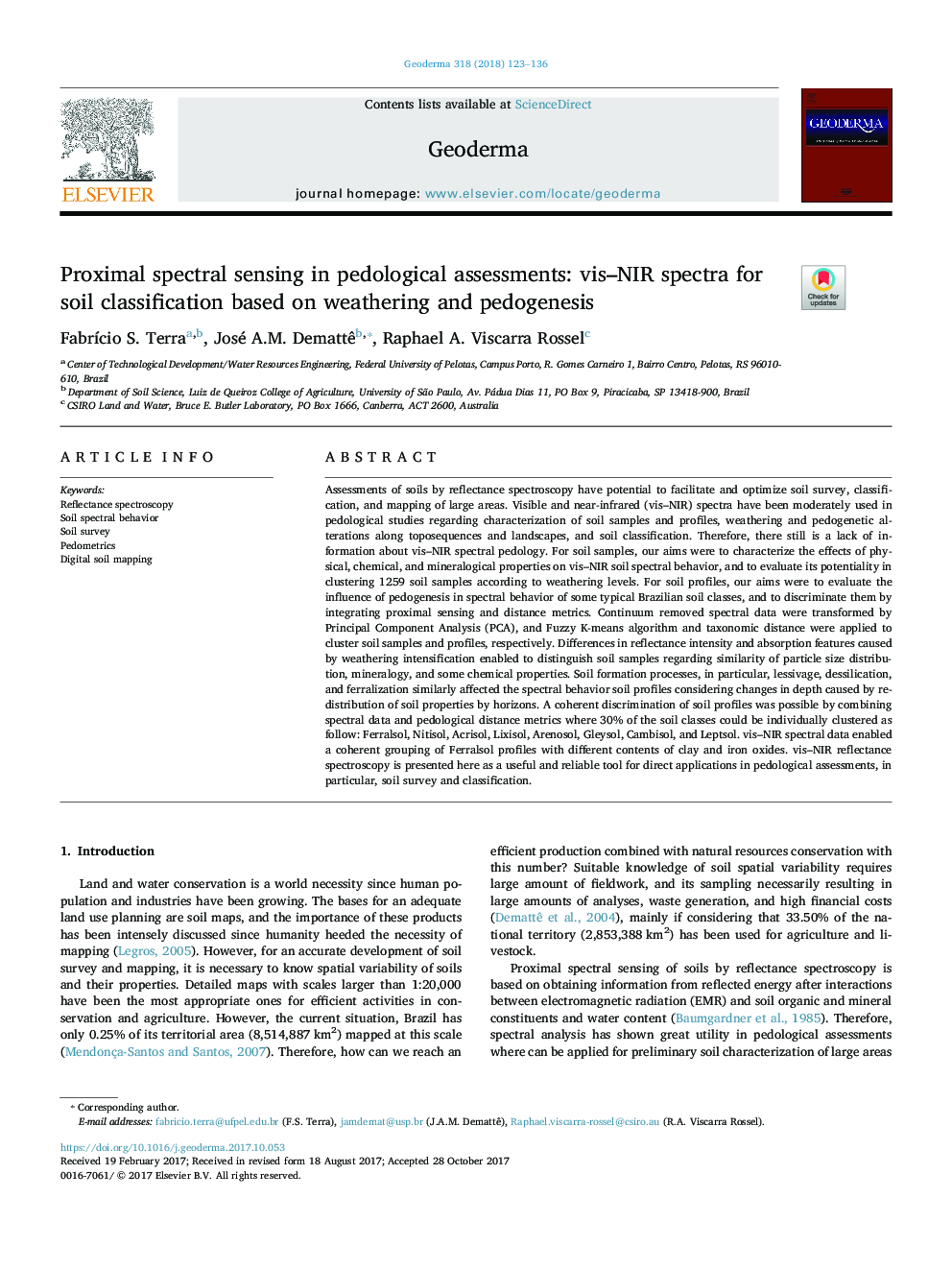| Article ID | Journal | Published Year | Pages | File Type |
|---|---|---|---|---|
| 8894190 | Geoderma | 2018 | 14 Pages |
Abstract
Assessments of soils by reflectance spectroscopy have potential to facilitate and optimize soil survey, classification, and mapping of large areas. Visible and near-infrared (vis-NIR) spectra have been moderately used in pedological studies regarding characterization of soil samples and profiles, weathering and pedogenetic alterations along toposequences and landscapes, and soil classification. Therefore, there still is a lack of information about vis-NIR spectral pedology. For soil samples, our aims were to characterize the effects of physical, chemical, and mineralogical properties on vis-NIR soil spectral behavior, and to evaluate its potentiality in clustering 1259 soil samples according to weathering levels. For soil profiles, our aims were to evaluate the influence of pedogenesis in spectral behavior of some typical Brazilian soil classes, and to discriminate them by integrating proximal sensing and distance metrics. Continuum removed spectral data were transformed by Principal Component Analysis (PCA), and Fuzzy K-means algorithm and taxonomic distance were applied to cluster soil samples and profiles, respectively. Differences in reflectance intensity and absorption features caused by weathering intensification enabled to distinguish soil samples regarding similarity of particle size distribution, mineralogy, and some chemical properties. Soil formation processes, in particular, lessivage, dessilication, and ferralization similarly affected the spectral behavior soil profiles considering changes in depth caused by re-distribution of soil properties by horizons. A coherent discrimination of soil profiles was possible by combining spectral data and pedological distance metrics where 30% of the soil classes could be individually clustered as follow: Ferralsol, Nitisol, Acrisol, Lixisol, Arenosol, Gleysol, Cambisol, and Leptsol. vis-NIR spectral data enabled a coherent grouping of Ferralsol profiles with different contents of clay and iron oxides. vis-NIR reflectance spectroscopy is presented here as a useful and reliable tool for direct applications in pedological assessments, in particular, soil survey and classification.
Related Topics
Physical Sciences and Engineering
Earth and Planetary Sciences
Earth-Surface Processes
Authors
FabrÃcio S. Terra, José A.M. Demattê, Raphael A. Viscarra Rossel,
